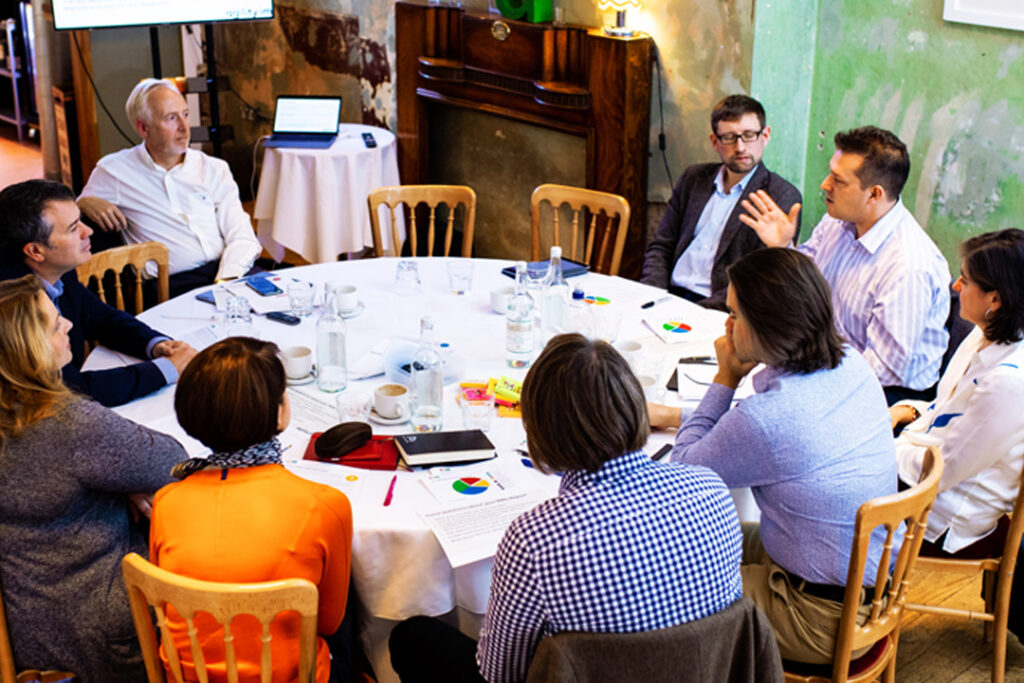Home » Knowledge Hub » Leadership » 5 Key Agile Leadership Behaviours
5 Key Agile Leadership Behaviours
19 April 2023 Leadership Sponsored

Story by
Agility in Mind Business Agility Transformation

In an increasingly interconnected and complex world, leaders must be agile to respond quickly and effectively in a changing world.
In this article, Agility in Mind, a consulting firm specialising in agile leadership training, has identified five key leadership behaviours necessary for organisations to thrive in a turbulent environment.
Agile Leaders Surviving in a Turbulent Environment
Agile leadership is necessary because we live in an era of rapid change, where organisations must be flexible enough to respond quickly to survive.
From Covid to geopolitical instability and supply chain fragility, organisations are facing unprecedented challenges. The increasing interconnectedness and complexity of global systems and the growing impact of natural disasters, pandemics, political instability, technological disruption, and changing consumer appetites increase the likelihood of significant challenges.
We may desire to return to normal post-Covid, but reading the tea leaves there is still plenty to be wary of. Organisations need to be ready to respond.
Moving from Traditional Leadership to Agile Leadership
In such a dynamic environment, traditional leadership styles and organisational structures are no longer effective. Traditional leadership styles often rely on rigid structures and processes that can make it difficult for organisations to respond quickly to changing conditions. They often prioritise stability and predictability over risk-taking, which makes it difficult for organisations to adapt to unexpected changes. Focusing on vertical structures and hierarchical decision-making makes it difficult for organisations to collaborate across departments and respond to complex, interdependent challenges.
Agility, however, is crucial for survival. The ability to respond quickly and effectively to change sets successful organisations apart from those that struggle. It requires a different kind of leadership, one that encourages experimentation, learning, and adaptation.
What is Agile Leadership?
Agile leadership is a mindset that values collaboration, adaptability, connective leadership, empowerment, and direction setting. In a TUNA environment (Turbulent, Uncertainty, Novel, and Ambiguity), organisations must be able to cycle through the OODA loop – Observe, Orient, Decide, and Act – quickly and efficiently to stay ahead of the competition.
This approach requires a shift from traditional hierarchical organisational structures toward more autonomous, cross-functional teams. These teams are better equipped to respond to change, make decisions quickly, and innovate in response to new challenges.
Paul Grew, Head of Coaching of Agility in Mind, commented:
“Agile leadership training can help organisations become more adaptive, collaborative, innovative, customer-focused, efficient, and effective, which lead to a competitive advantage in the marketplace.”
Moreover, agile leadership encourages a culture of learning from failures, recognising that mistakes and setbacks are opportunities for growth and improvement. It also values diversity and inclusivity, recognising that different perspectives and experiences can lead to better solutions and more innovation.
5 Key Agile Leadership Behaviours
The key to success in such a dynamic and challenging environment is a new approach to leadership. Organisations that embrace agility and innovation will be better equipped to navigate the uncertainties of the future and thrive in the face of constant change.
Agility in Mind created the Agile Leadership Academy to help leaders shift their mindset and adopt five key behaviours:
- Direction setting – Organisations should have a clear mission and purpose to make informed decisions and prioritise actions. In a turbulent environment, where events are unpredictable and volatile, having a north star can guide decision-making and provide stability.
- Collaboration – Organisations should create networks of highly autonomous, interdependent cross-functional teams. It allows for quicker decision-making, as teams can work together to solve problems and respond to changing circumstances. It also fosters a culture of innovation and continuous improvement, as teams are encouraged to experiment and learn from each other.
- Adaptability – Organisations should proactively respond to and anticipate change rather than reactively responding to it. This means being open to new ideas and approaches and having the flexibility to pivot when necessary. In turbulent environments, the ability to pivot quickly can be the difference between success and failure.
- Connective leadership – Leaders should act as catalysts and conductors, facilitating connectivity and culture across the organisation. It means creating an environment where people feel comfortable sharing ideas and collaborating. It also means fostering a culture of trust where people feel empowered to take risks and try new things.
- Empowerment – Authority, decision-making, and autonomy should be focused on empowering colleagues to unleash their potential and entrepreneurial capability. This means giving people the resources and support they need to succeed and allowing them to take ownership of their work.
As the world becomes uncertain and change happens at a faster pace, leaders need to be able to navigate this landscape. They must be able to thrive in an environment where they cannot predict what is going to happen next.




































